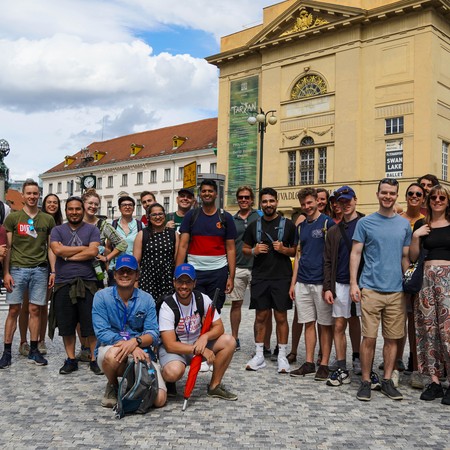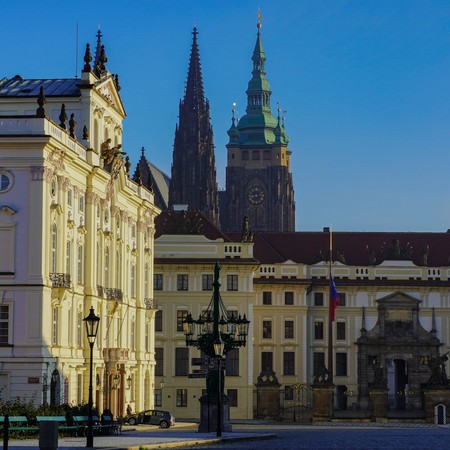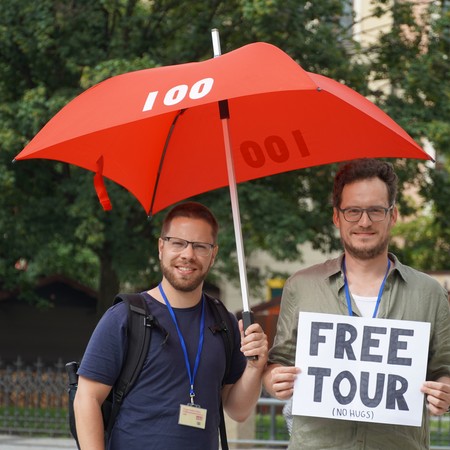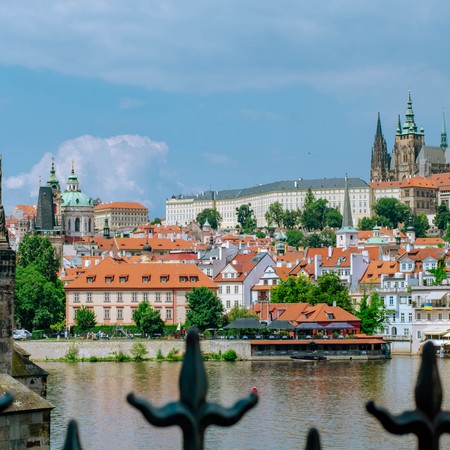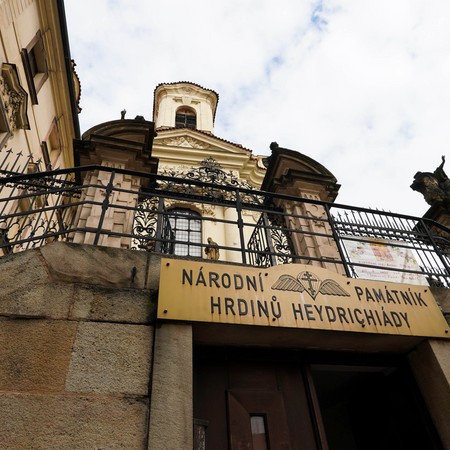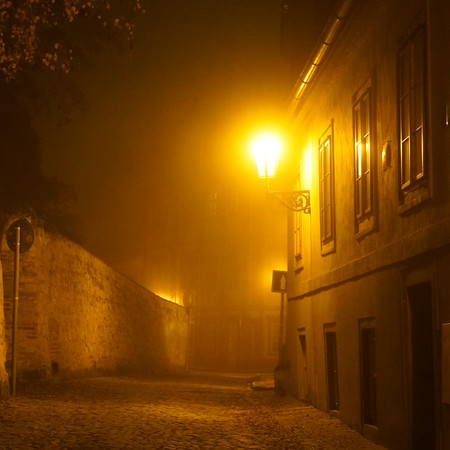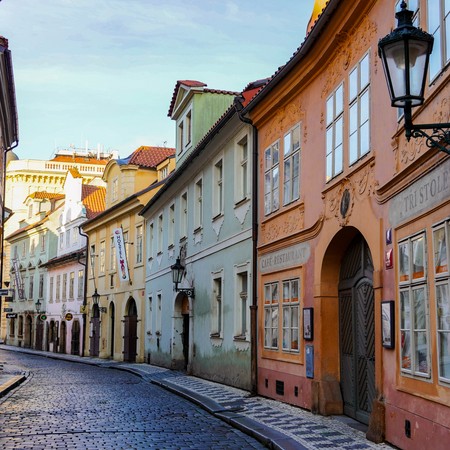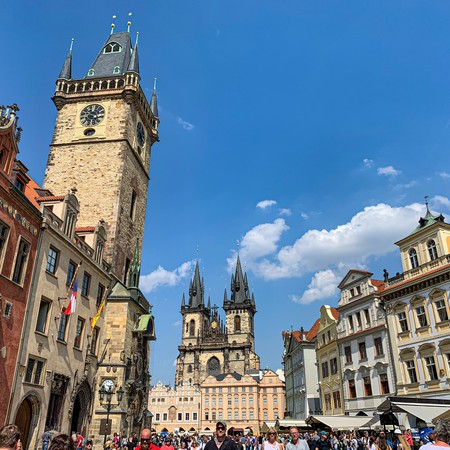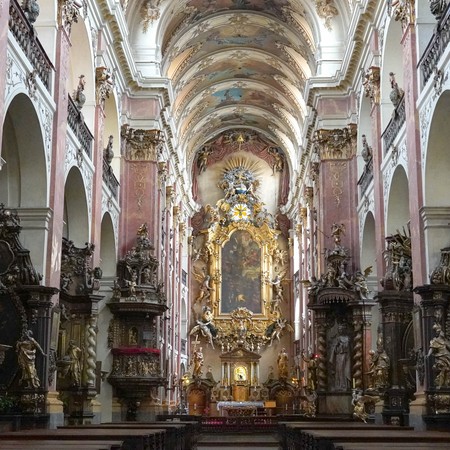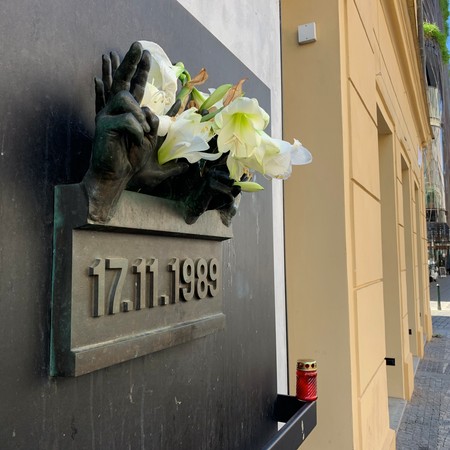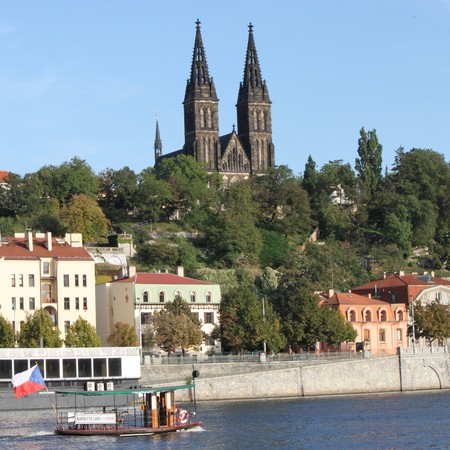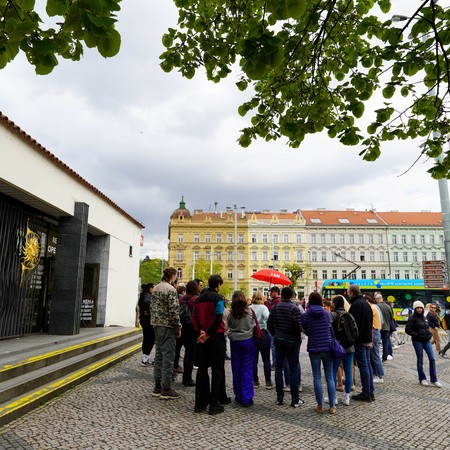Prague's Jewish Quarter
It is a former Jewish Quarter of Prague named after the emperor Josef II, who freed Jewish people from the ghetto. The Jewish Quarter was established as early as the 13th century and was separated from the Old Town by a wall. Jewish people were rarely allowed to leave their quarters and often suffered from pogroms and other antisemitic practices.
How many Synagogues are in the Prague Jewish Quarter?
Six original synagogues survived WWII in the Prague Jewish Quarter, such as Old-New Synagogue, Spanish Synagogue, and Pinkas Synagogue. There is also the Ceremonial Hall and the Old Jewish Cemetery, which surprises people with its uneven terrain. You can visit it through the Prague Jewish Museum.
Sights to see in Josefov Prague
- Old-New Synagogue - the oldest still-functioning synagogue in Europe. It is where, according to a popular legend, the Golem of Prague is locked in the attic.
- Spanish Synagogue - also known as the most beautiful synagogue in Prague. It was built at the end of the 19th century in the Moorish style of architecture, inspired by Alhambra Palace in Granda, Spain.
- Old Jewish Cemetery - the most famous Prague cemetery where thousands of tombstones are clattered. It was active for 300 years, during which people were buried there in layers due to lack of space in a small Jewish Ghetto.
- Pinkas Synagogue - an entrance to the Old Jewish Cemetery, it is a memorial of Holocaust victims. The walls of the Pinkas Synagogues are covered with thousands of names of people who died in concentration camps during WW2.
- Klausen Synagogue - this synagogue is part of the Jewish Museum's exhibition which displays artifacts, Torah (Jewish religious manuscripts), traditional clothing, medical instruments, etc. It also showcases Jewish holidays and traditions.
- Maisel Synagogue - this reconstructed Renaissance synagogue is the extension of the Jewish Museum dedicated to the history of the Prague Ghetto.
- Ceremonial Hall - a former Chevra Kadisha building, now dedicated to the Burial Ceremonies exhibition.
- Franz Kafka's statue - is located next to the Spanish Synagogue and was erected in 2003.
- Jewish Town Hall - a beautiful Baroque building with a unique clock that shows time backward.
A Brief History of Prague Josefov
The history of the Prague Jewish Quarter dates back to the 9th century. First Jewish settlements were, most likely, located in Lesser Town, where later the remains of the oldest Jewish Cemetery were discovered. Nevertheless, in 1254, after the Lateran Council condemned Jewish people for the killing of Christ, all Jewish people who lived in Prague were moved to the area in the north of the Prague Old Town. It was separated from the rest of the city by the wall, moat, and several gates. From then on, the lives of people in the Jewish Ghetto would depend on the sole will of the Czech ruler.
Growing European antisemitism was stimulated by the series of made-up rumors about the Jewish population, like one that said that they use the blood of the Christian children for their heretic rituals. Jewish people were persecuted, hunted down, expelled from their homes, and executed for crimes they never committed all over the continent. In Prague, they suffered from pogroms (acts of violence aimed at a specific group), were limited in their occupations, and, were basically, considered to be the property of the king. The worst pogrom in Prague Ghetto happened in 1389 when the houses of Jewish people were set on fire and those who tried to escape the flames were massacred on the streets. It is estimated that 3,000 people died in this pogrom, which was later immortalized in the poem of the Jewish rabbi Avigdor Kara.
In the 16th century, the Jewish Quarter was going through its much-awaited urban development. The Town Hall and two new synagogues were added to the cityscape, as well as numerous houses for Jewish families. Although in 1595 there were 150 houses in the Ghetto, people were in dire need of extra living spaces. In 1703 Jewish Quarter was inhabited by 11,517 people, while the population of four other Prague districts was 11,618 citizens.
The 18th century was a turbulent time for the Jewish population in Prague, which, fortunately, ended on a positive note. Empress Maria Theresa expelled the Jewish people from Prague and the whole Holy Roman Empire at the beginning of 1745. Nobody knows what were the reasons behind the queen's decision, but she eventually changed her mind and Jewish people were allowed to stay. Some historians say, that Maria Terezia changed her mind after her Treasury presented her with the possible damage report from expelling hundreds of thousands of taxpayers, and she rushed to call it off. Unlike his vengeful mother, the son of Maria Terezia, Joseph II, the next ruler on the emperor's throne, had done good things for the Jewish Population of Prague. In 1792, Joseph II released the first decree that allowed people to move out of the quarter. Perhaps, he was trying to redeem his mother's deeds in the eyes of his subjects, or maybe the ideas of Enlightenment prevailed.
During WW2, those Jewish people who lived in the Jewish quarter were forcefully sent to the Jewish Ghetto Terezin, and then to other concentration camps, mainly Auschwitz. In 1945, after the camps' liberation, most of the survivors migrated to the USA, Canada, Israel, and other countries.
Nowadays, there are less than 1,500 people in the Prague Jewish Community.
Urban Redevelopment of Prague Jewish Quarter - Prague Sanitation
Prague Sanitation was a 'cleansing' process done in the former Jewish Quarter and parts of the Old Town in the second half of the 19th century, where hundreds of old buildings were demolished. The area was rebuilt in a fashionable Art Nouveau style inspired by Parisian architecture. By that time, Jewish people were able to move away from the Quarter thanks to Emperor's Josef II abolishment of the ghetto in the 1780's. Unfortunately, a lot of former houses of Jewish people that were inhabited by the criminals and the poor in the aftermath of Josef's reforms were destroyed, so it is hard to imagine what the Jewish Quarter looked like before Sanitisation.
Visiting the Jewish Quarter
- The ticket to the Prague Jewish Museum costs 550 CZK including 4 original synagogues, Ceremonial Hall, and the Old Jewish Cemetery. The ticket for 400 CZK does not include the visit to the Old-New Synagogue.
- It is open from Sunday to Thursday from 9 am to 4 pm. The museum closes early on Friday and is closed completely on Saturday due to the Sabbath. Check out the official website of the Prague Jewish Museum to plan your visit.
- For all fans of Prague legends - Prague Golem is located in the attic of the Old-New Synagogue, but it's not accessible to the public. Not even if you are a president! :)
See more of our Prague Travel Tips.
Author: Valeriia Zahradnikova and Vaclav Zahradnik, Prague guides certified by Prague City Tourism agency. Valeriia and Vaclav have worked in tourism for over 6 years and have guided thousands of Prague visitors.
